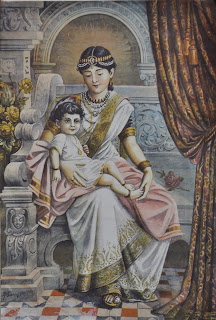Reading Notes: Life of Buddha: Gopa and Suddhodana Grieve Part B
This story is part of the Buddha unit. Story source: The Life of Buddha by Andre Ferdinand Herold (1922).
For the second part of this weeks reading, I read Gopa and Suddhodana Grieve. What I found interesting with this part of the story was the King and Queen's reaction to their son leaving. In the first part of the Life of Buddha, the Brahmans had foreseen this event and predicted that their son would go on to be the king of men. The queen, regardless, was in great distress when she couldn't find her son. The king, likewise, became frantic and had the entire city looking for his son. Its strange that a community of people who believe in the divine nature of gods and prophecies would not just accept that the son of the royal family was continuing to fulfill his prophecy. With regards to the style of writing, I liked how the Queen's despair and grief was highlighted through her monologue rather than a third person narrative describing her feelings. Other aspects of the style, such as starting a new line with each new dialogue, has been a reoccurring theme with these stories and something that helps parse the reading out well. Much like from the first reading notes, I would like to model my own stories after this structure. Having a prophecy makes for a clear story direction and lessens the chances of deviating from the central goal.
For the second part of this weeks reading, I read Gopa and Suddhodana Grieve. What I found interesting with this part of the story was the King and Queen's reaction to their son leaving. In the first part of the Life of Buddha, the Brahmans had foreseen this event and predicted that their son would go on to be the king of men. The queen, regardless, was in great distress when she couldn't find her son. The king, likewise, became frantic and had the entire city looking for his son. Its strange that a community of people who believe in the divine nature of gods and prophecies would not just accept that the son of the royal family was continuing to fulfill his prophecy. With regards to the style of writing, I liked how the Queen's despair and grief was highlighted through her monologue rather than a third person narrative describing her feelings. Other aspects of the style, such as starting a new line with each new dialogue, has been a reoccurring theme with these stories and something that helps parse the reading out well. Much like from the first reading notes, I would like to model my own stories after this structure. Having a prophecy makes for a clear story direction and lessens the chances of deviating from the central goal.
Photo of
Prince Siddhartha with his maternal aunt Queen Mahaprajapati Gotami by Wikipedia


Comments
Post a Comment